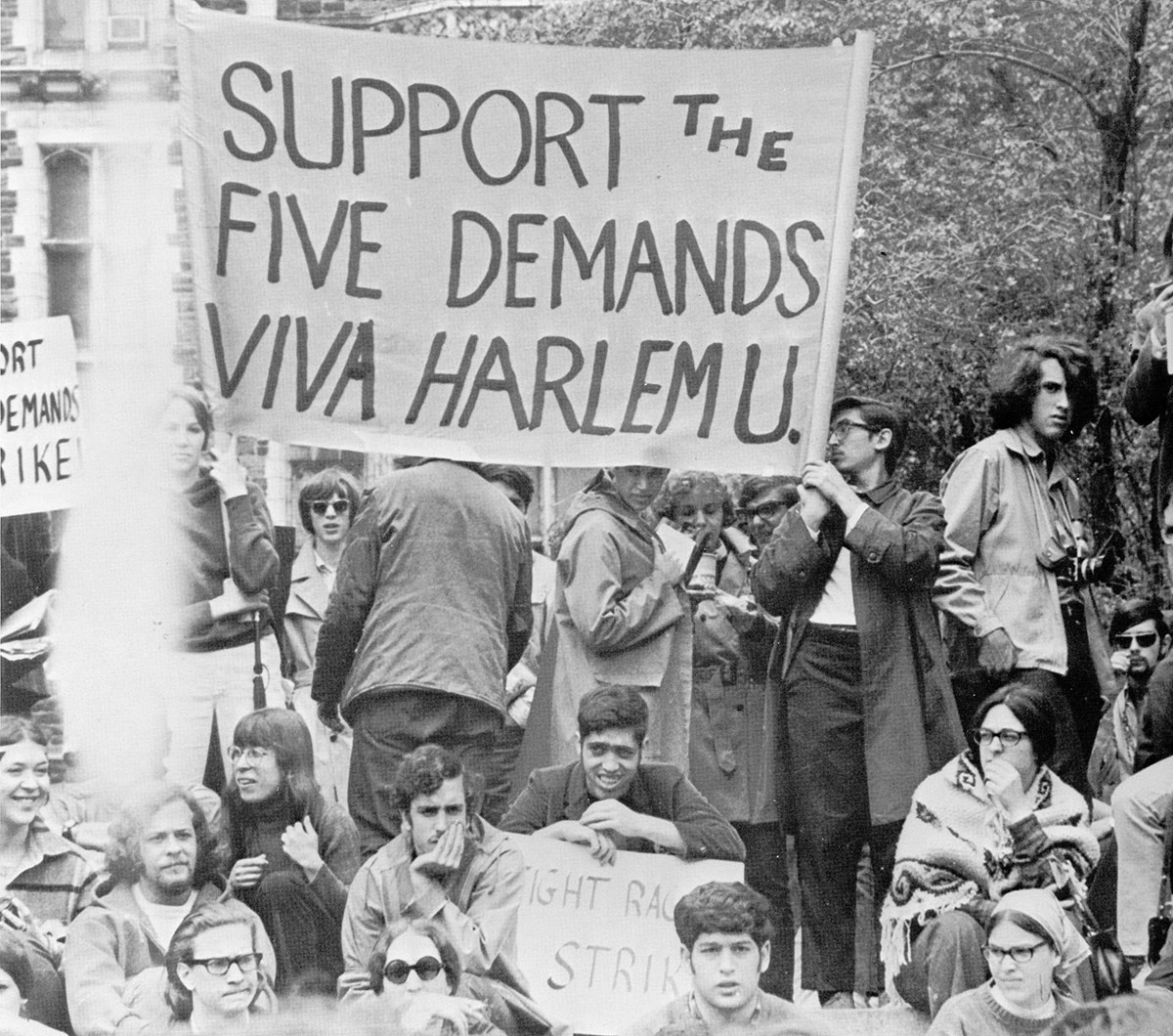Viva Harlem U!

Date: 1969
Caption: City College students held signs supporting a student strike, after several months of organizing for changes in curriculum and admissions there and on other City University of New York campuses.

Although City College, where Audre Lorde taught, was in the predominantly Black and Latinx community of Harlem, there were very few Black or Latinx students who attended. In the 1968-1969 school year, City College students organized to demand change in admissions policies, curriculum, and support. They identified five demands:
-
“A school of Black and Puerto Rican Studies”
-
“A freshman orientation for Black and Puerto Rican Students”
-
Student control over the SEEK program
-
Student populations in incoming classes that reflected the racial composition of the New York City high schools, not City College’s historically white student population
-
“That all education majors be required to take Black and Puerto Rican history and the Spanish language.”1
Some faculty members, including Audre Lorde, showed their solidarity with the student protesters. They supported the student’s call to shut down the main campus. Lorde moved her classes off campus to a local middle school, which the students had renamed “The University of Harlem.”2
The student strike was successful in achieving major changes at City College and in the City University system. It helped bring about the creation of Black studies and Puerto Rican studies programs at Brooklyn College, where Audre Lorde later taught. Student activism also supported the continuation of the SEEK (Search for Education, Elevation and Knowledge) program and led to a new open admissions policy at CUNY. Any student who completed high school in New York City would be admitted to at least one of the CUNY community colleges or four-year colleges.3
However, CUNY campuses remained inaccessible for many Disabled students. In the early 1970s, Disabled students at Brooklyn College formed the activist organization SOFEDUP and waged their own protests for an accessible education.4
See more documents and oral histories related to the history of activism in the CUNY system at the CUNY Digital History Archive.
-
“We Demand.” ↩︎
-
Iemanjá Brown and Miriam Atkin, “Introduction,” in Audre Lorde, “‘I teach myself in outline’: Notes, Journals, Syllabi, and an Excerpt from Deotha,” Contributors Iemanjá Brown and Miriam Atkin, https://cuny.manifoldapp.org/projects/audre-lorde-i-teach-myself-in-outline-cuny-lf. ↩︎
-
Martha Biondi, Black Revolution on Campus (Oakland: University of California Press, 2012); Tahir Butt, “You are Running a De Facto Segregated University," in The Strange Careers of the Jim Crow North: Segregation and Struggle outside of the South, ed. Brian Purnell and Jeanne Theoharis with Komozi Woodard (New York: New York University Press, 2019). ↩︎
-
SOFEDUP. ↩︎
Categories: Manhattan, higher education
Tags: women's activism, Black people, white people, protest, curriculum, organizing, photography, imagery, and visual representation, multiracial organizing, Harlem
This item is part of "Audre Lorde and Student Protest at CUNY" in "Black and Latina Women’s Educational Activism"
Item Details
Date: 1969
Source: City College Archives
Copyright: Under copyright. Used with permission. Courtesy of the City College Archives.
How to cite: “Viva Harlem U!” in New York City Civil Rights History Project, Accessed: [Month Day, Year], https://nyccivilrightshistory.org/gallery/viva-harlem-u.
Questions to Consider
- What do you notice about the photograph? What questions would you ask to learn more about this protest?
References
How to Print this Page
- Press Ctrl + P or Cmd + P to open the print dialogue window.
- Under settings, choose "display headers and footers" if you want to print page numbers and the web address.
- Embedded PDF files will not print as part of the page. For best printing results, download the PDF and print from Adobe Reader or Preview.
